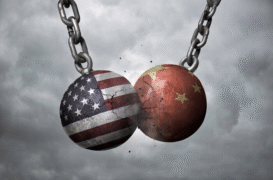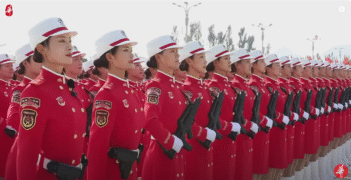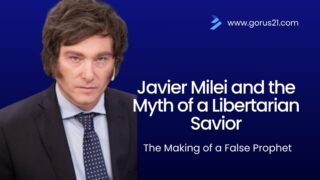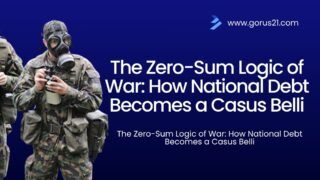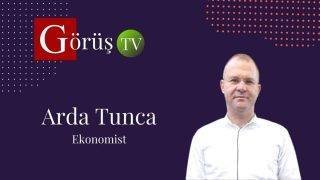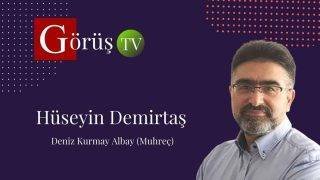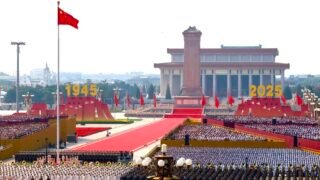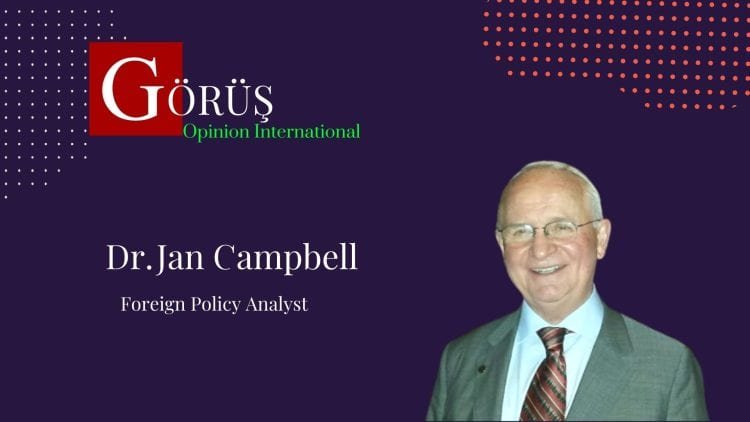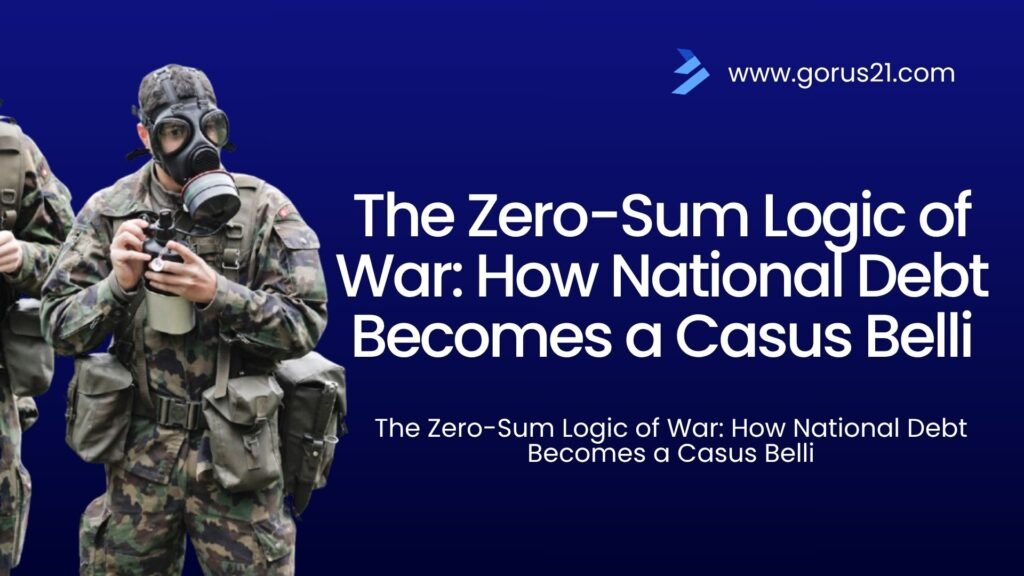
Beyond the Battlefield: Unmasking the “Zero-Sum Logic” where crippling National Debt becomes a central cause of Global Conflict, not just a consequence. Discover the four ways nations finance war, the terrifying legacy of hyperinflation, and the paradox of how financial markets can either guarantee peace or precipitate war.
The connection between national debt and global conflict is not a secondary effect or simply the cost of cleanup after the fact; it is a foundational, and often overlooked, driver and central cause (casus belli) of conflict itself. This profound link means that the line between financial stability and geopolitical stability can rapidly dissolve. Historically, financial and economic issues have frequently served as the underlying cause or justification for war. The premise, when viewed globally, is brutally simple: national debt often becomes a kind of zero-sum game that eventually requires conflict to rebalance.
The Zero-Sum Financial Calculus of Conflict
The global economy relies on constant borrowing, necessitating promises to pay back more than currently exists. When this compounding tension hits a breaking point—when there isn’t enough real wealth or actual production to satisfy all the debts—the question arises: where do the extra resources actually come from? Historically, the answer is often physical confiscation or outright conflict, resulting in the forced transfer of wealth from one nation or group to another.
One way to avoid this kinetic, physical clash is the so-called “inflation solution”: printing more bills, flooding the system with liquidity, and essentially reducing the real value of the debt through inflation. However, this strategy ultimately trades short-term peace, avoiding immediate conflict, for longer-term structural fragility , creating a giant bubble called the global economy waiting to explode. When nations forget the hard-learned lessons of history—such as the financial tail risks from the Napoleonic Wars, World War I, and World War II—they become ripe for repeating the past mistakes of creating unmanageable debt to fund ambitions or conflicts. The memory of what war truly costs in economic devastation starts to fade after prolonged peace.
The Financial Calculus of War: Four Ways to Fund Conflict
The financial calculus of any major conflict inevitably results in massive debt. When a nation finds itself at war, the immediate immense capital requirements are theoretically met through about four main methods:
Increased Taxation: The most straightforward but politically toxic method.
Voluntary Savings: Relying on patriotic citizens to buy war bonds.
Compulsory Savings: Forcing people to lend to the government through measures like forced loans or wage freezes.
Levy on the Vanquished: Making the losing side pay through reparations.
Leaders are overwhelmingly averse to the first path, increased taxation, even during existential crises, because it generates immediate and widespread popular resentment. No leader wants to fight a war abroad while fighting a tax revolt at home. The numbers bear this out: during World War I, France’s ordinary tax receipts covered a paltry 16% of its total government expenditures.
When taxation is insufficient, the inevitable alternative is the path of least political resistance: public debt monetization. This means wars are almost universally paid for by vast expansions of public debt, which is then monetized, meaning the central bank effectively buys up government bonds, injecting newly created money into the system to cover government spending. This leads to immense public deficits and massive increases in national debt.
The resulting scale of debt is staggering:
In World War I, the UK’s national debt multiplied by 12 times its pre-war level.
Germany’s short-term debt (floating debt) multiplied by an incredible 184 times.
The United States, in barely 20 months of involvement, saw its overall federal debt jump from around $1 billion pre-war to $19 billion—a 19-fold increase—in under two years.
In World War II, the U.S. federal debt skyrocketed from about $36 billion in 1939 to nearly $200 billion by the war’s end. Debt and conflict are locked in a perpetual dangerous partnership.
Inflation: The Great Tax Gatherer and Historical Debasement
When nations resort to debt monetization on this scale, they inevitably invoke what the economist John Maynard Keynes famously called the great tax gatherer: inflation. Inflation is the perennial attribute of war precisely because debt monetization is the perennial financing method of war. Leaders understand that an emergency measure like printing money is always politically easier to justify than imposing politically costly taxes.
This mechanism isn’t new; it is simply the modern version of historical currency debasement:
Ancient Athens during the Peloponnesian War resorted to turning high-quality silver coinage into inferior bronze coins coated in a thin layer of silver.
Rome during the Second Punic War drastically reduced the weight of its standard bronze coin, the aes, by a staggering 83%.
The French Revolutionary government printed vast quantities of paper money called assignats, which quickly became worthless, financing the revolutionary wars until their inevitable collapse into hyperinflation.
Whether centuries ago by melting down metal or today by a central bank digitally expanding the money supply, the underlying financial desperation and the resulting inflationary outcome are basically identical. Inflation is the government’s way of repaying its debts with less valuable currency, effectively expropriating wealth from anyone holding savings or government bonds. During World War I, wholesale prices on average doubled in the UK, Germany, and the US, and multiplied by three and a half times in France. This implies sustained average annual inflation rates in the 15 to 30 percent range for the major belligerents.
Cleaning Up the Mess: Divergent Post-WWI Strategies
Once the fighting ends, nations must deal with the crushing debt burden. The strategic choices made after World War I—which arguably dictated the course toward the next great conflict—involved two wildly divergent strategies for liquidating internal indebtedness:
Liquidation through very high inflation: Essentially cheating domestic debt holders.
Liquidation through severe deflationary austerity and economic hardship.
The Inflationary Path: Germany and France
Germany and France chose the first path, letting inflation run rampant. In Germany, this collapsed into the infamous hyperinflation between 1921 and 1923. Bondholders and savers, typically the patriotic middle class who had bought war bonds, were paid back in currency that was literally worthless. The internal debt was wiped out at the cost of erasing the life savings and purchasing power of a huge segment of the population—a debt liquidation by mass expropriation via the printing press. This profound economic trauma fueled radical politics, as the disillusioned middle class felt the state had fundamentally robbed them, creating the social instability and widespread anger that allowed extremism, including Nazism, to flourish in the Weimar Republic.
The Deflationary Path: The United Kingdom
The United Kingdom chose the exact opposite, deflationary path, strictly adhering to honoring its creditors. When Winston Churchill restored the pound sterling to its pre-war gold parity in 1925, he was making a powerful statement that a British promise to its bondholders was sacrosanct. This protected bondholders but significantly overvalued the pound, making British exports uncompetitive. It pushed the British economy into a sustained period of deflationary pressure and economic stagnation throughout the 1920s. This led directly to high unemployment, falling wages, and crippling social unrest, famously culminating in the General Strike of 1926. The UK taxpayer finally finished paying off the debt borrowed to fight World War One only in March 2015, nearly a century later.
Debt Management as War Preparation: The Third Reich
The Third Reich achieved a horrifying paradox: suppressing inflation amidst massive money printing to finance colossal rearmament (an average annual debt acceleration of 52%, and money supply increasing by 32% annually). By all conventional logic, this should have resulted in immediate runaway hyperinflation, but official prices rose only 10.8% total between 1939 and 1944. This was accomplished through an utterly brutal and comprehensive system of extreme financial repression:
Rigid Price Controls: Raising the price of essential goods was made a criminal offense.
Strict Wage Controls: Salaries were fixed, preventing workers from bargaining for higher pay.
Strict Rationing: Consumer goods, including food rations for the average civilian limited to roughly 1,900 calories per day, were severely restricted.
The state successfully suppressed the symptoms of inflation by simply crushing almost all avenues for private consumption. The government deliberately created massive forced savings. Excess purchasing power generated by the war economy and money printing was trapped in bank accounts or channeled into buying government war bonds because there was literally nowhere else for it to go. This successfully bottled up the massive inflationary pressure until the war ended, but it came at the cost of an extreme curtailment of liberty.
Debt as a Strategic Weapon: Modern Geopolitics
In the modern landscape, financial liabilities are increasingly viewed as potential strategic weapons, a form of economic nationalism.
The Financial WMD Threat
The discussion around China’s vast holdings of U.S. Treasury notes raises the terrifying scenario of a financial “Weapon of Mass Destruction” (WMD). China holds trillions of dollars in U.S. government debt. It could theoretically use its holdings as a financial WMD by dumping those treasuries rapidly onto the global market, causing bond prices to crash and U.S. interest rates to skyrocket, potentially crippling the U.S. economy at a critical moment. However, this is largely an example of the doctrine of financial mutually assured destruction. Dumping the assets would instantly crash the value of China’s remaining holdings and likely collapse the entire global financial system upon which China depends for its own exports and economic stability. The financial WMD works best as a credible deterrent threat rather than as an active first strike option.
The Military-Industrial Complex and the Greek Crisis
The Greek sovereign debt crisis offers an equally cynical example of how debt can fuel geopolitical friction. Greece, largely driven by its longstanding historical tensions and security fears regarding Turkey, became one of the world’s most disproportionately high spenders on conventional weaponry relative to its economy.
This massive spending was allegedly steeped in significant corruption. German defense companies, particularly submarine manufacturers, were allegedly bribing Greek politicians and military officials over many years to ensure that Greece purchased hugely expensive German submarines and tanks, often more than they needed. The result: Greece amassed massive national debt, partly to finance these huge weapons purchases, largely from German companies. When the debt crisis hit around 2009-2010, primarily German and French banks held significant portions of that Greek government debt. German chancellors, representing the largest creditor nation, then pressed for incredibly harsh austerity measures on the Greek people to ensure Greece could continue servicing its loans. These were loans taken out, in no small part, from German banks to pay for German weapons, often facilitated by those alleged bribes.
This situation perfectly illustrates Dwight D. Eisenhower’s prophetic 1961 farewell address, warning against the unwarranted influence and creeping power of the immense military establishment and a large arms industry, the military-industrial complex. The Greek case tragically demonstrates how this influence translates directly into unsustainable national debt accumulation, which then destabilizes entire international alliances and structures like the EU.
The Paradox: Debt Markets Can Also Buy Peace
Counterintuitively, sovereign debt markets might actually promote peace under certain circumstances. The core idea is that access to these markets can help alleviate what international relations scholars call the commitment problem, which is seen as a primary historical cause of preventive wars.
The commitment problem arises when a declining state (State A) fears that a rising state (State B) will become overwhelmingly stronger and later renege on current agreements, seizing resources or demanding better terms. State B cannot credibly commit to honoring agreements tomorrow because its future power will remove the incentive to do so. Thus, State A might launch a preventive war today while it still holds an advantage rather than waiting to be dominated tomorrow. State B possesses immense future power and resources but lacks the current liquidity (cash on hand) to make a large enough payment or transfer to State A today to reassure it and buy peace.
Access to global credit markets solves this: it allows the rising State B to effectively borrow against its anticipated future streams of resources today. The borrowed liquidity (cash raised by selling bonds today) can then be used to make immediate large-scale transfers or concessions to State A, effectively appeasing it and buying off the incentive for preventive war. Debt is thus used to finance peace instead of conflict. The ability to borrow provides the necessary funds right now to bridge that immediate credibility and liquidity gap.
Constraints on Peace-Through-Borrowing
This peace-through-borrowing mechanism, however, is not a guaranteed solution. It is constrained by two critical macroeconomic factors:
The Cost Constraint: If the real risk-free interest rate (R) is just too high. A high ‘R’ makes the cost of borrowing the massive sums needed to appease the declining state prohibitively expensive for the rising state. If the long-term cost of servicing this enormous “peace debt” exceeds the perceived short-term cost of fighting for dominance, the rising state might rationally choose conflict. The economic collapse before World War II drastically increased the cost of capital globally (raising R), which, according to this theory, heightened the dangers of war because peaceful settlements became financially unaffordable.
The Lender’s Constraint: This relates to default risk. The market becomes unwilling to lend enough money to the rising state because the perceived risk of that state defaulting on the massive peace loan is simply too high. For example, if the rising state fails to achieve the anticipated growth or military dominance, it might then be unable or unwilling to repay the huge debt taken out specifically to buy peace. If lenders fear default is too likely, the market simply freezes up, providing no liquidity, and preventing a peaceful settlement.
The market’s fear of catastrophic risk means that low probability, high impact power shifts (such as developing a nascent nuclear weapons program) are inherently more dangerous than highly likely, moderately sized shifts. The potential downside—the severe default risk associated with the failure of that low-probability, high-impact gamble—is too severe for the market to bear. Lenders refuse to provide the necessary liquidity up front, and the declining power sees no credible compensation, making the incentive to launch a preventive war extremely high.
In conclusion, financial factors are not just collateral damage in global conflict; they appear to be foundational drivers of both conflict and peace. Debt is the primary historical mechanism for financing war, leading to monetization, inflation, and often profound economic reorganization. Conversely, access to sovereign debt markets is an essential tool for maintaining peace, offering the crucial liquidity needed to solve commitment problems. The limits of that market liquidity, constrained by fundamental factors like the world risk-free interest rate and the perceived risk of default, ultimately determine when a tense crisis tips over into outright war.



